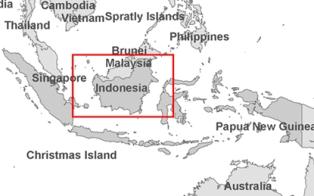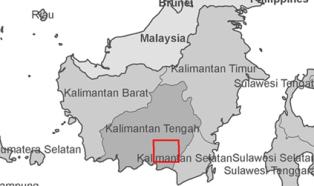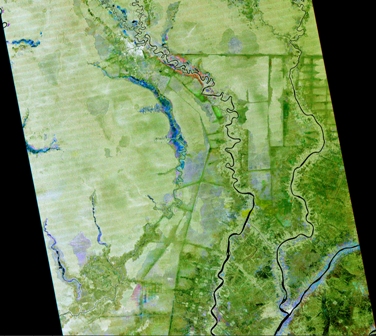Siemens Healthcare supports Indonesian reforestation program for CO2 savings
1 Oct 2010
Siemens Healthcare is combining its Proven Excellence Program for refurbishing medical devices with supporting tropical forest regeneration in Indonesia.
The aim is for greater sustainability in healthcare and to contribute to carbon dioxide (CO2) savings and wider environmental benefits.
In the Proven Excellence Program, a quality process specially developed by Siemens, the product lifecycle of these systems is extended, and they are remarketed as what are known as Proven Excellence Systems.
As a result, in its last fiscal year Siemens was able to help prevent up to 20,000 tonnes of CO2 emissions, which corresponds to the power consumption of around 5,700 households.
In the reforestation programme, Siemens Healthcare has signed an agreement with World Wildlife Fund (WWF) Indonesia to plant a specific number of trees in Sebangau National Park, Indonesia for every Proven Excellence System sold. Thus Siemens would like to contribute to a further expansion of carbon dioxide storage.
For some years now, Siemens has been taking back preowned medical devices, such as CT and MRT scanners, ultrasound, radiotherapy and X-ray systems, and refurbishing them into mint condition systems. Resources that would otherwise have been used for material preparation and production are saved.
"Economical and efficient best-in-class refurbished systems
tailored to customers supplement the innovative product portfolio at
Siemens," said Elisabeth Staudinger, CEO Refurbished Systems at
the Siemens Healthcare Sector.
Siemens’ Healthcare Sector in Indonesia has recently signed an
agreement with the Indonesian arm of WWF. In the context of the
New-Trees-Initiative of WWF in Indonesia, Siemens will ensure
with the help of its business with refurbished devices (Proven
Excellence Systems), that a total of 32 hectares of cleared rain
forest in Indonesia will be replanted.
Every time Siemens sells a Proven Excellence System, trees will be planted in a cleared rain forest area of Sebangau National Park. The number of seedlings is based on the amount of CO2 saved by the respective system sold.
“According to our calculations, some 80 seedlings are planted for each CT unit shipped, so that when mature the trees will capture around 14 tonnes of CO2,” explained Staudinger
Every tree will have a WWF sign. Starting from autumn 2010,
it will be possible to track on Google Earth how the new rain forest
is progressing, via longitude 114.024372 and latitude -2.584830.
The nature reserve is in Kalimantan, the Indonesian part of Borneo,
which is the largest island in the world and has one of the most
biologically diverse tropical rainforests on earth. It is home to
many endangered species, including the orang-utan.
Comment by the Editor (who has two forestry degrees): The park is one of the largest in Indonesia, covering 568,700 ha and suffers large annual forest loss from burning, illegal logging and encroachment. While sponsoring the planting of a fixed number of trees up to 32ha is laudable, it is not the most efficient use of money. One wonders the cost of having a WWF sign on every tree! Supporting forest protection measures and education of local villagers, as well as helping them use their current land sustainably, will have a far greater effect in preserving the complete environment and maintaining local CO2 storage (which in fact is not a priority locally compared to the loss of species and habitat).
More information
WWF Indonesia
www.wwf.or.id/en/about_wwf/whatwedo/forest_species/
where_we_work/sebangau/



Three-colour satellite image of Sebangau National Park near Palangkaraya, Kalimantan, Indonesia recorded on 14 February (red) 14 June (green) and 25 June 25 (blue), 2008. © Infoterra GmbH 2008.
The light green areas in the top left half of the image mark tropical peat-swamp forest of the Sebangau Ecosystem in Central Kalimantan, which is renowned for its high conservation importance and natural resource functions. It has recently been designated as an Indonesian National Park, primarily to protect the largest extant world population of the endangered Bornean Orang Utan (Pongo pygmaeus).
The Sebangau is suffering from drainage caused by the construction of hundreds of canals by illegal loggers (many of these can also be distinguished in the image), who use them to float felled timber out of the forest. These canals are rapidly draining the peat of moisture, which threatens to cause peat and forest collapse and large-scale forest fires (various fire scars can be identified in the image). Additional pressure was put on the forests water balance by a large land conversion scheme (so called Mega Rice Project) starting in 1996. Within this project at least half a million hectares of primary peat swamp forest was removed and more than 4,600 kilometres of channels were excavated in order to restore Indonesia's rice self-sufficiency. The area of deforestation can be identified in darker green colour in the bottom right half of the image.
Later the project was abandoned and the present Indonesian government is in the process of rehabilitating the area, but major damage has already been done to the regional and global environment. The white area in the top centre of the image marks the city of Palangkaraya.
Acknowledgements to infoterra for the image and background information. www.infoterra.de